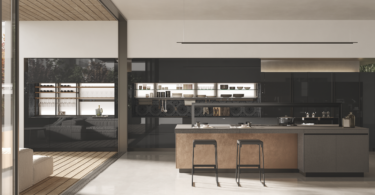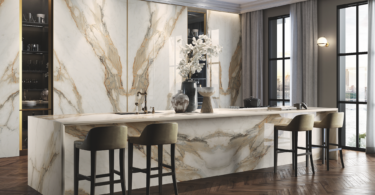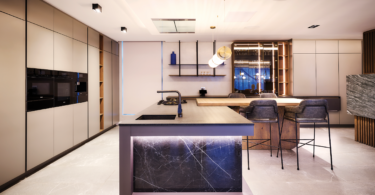A handleless kitchen always looks streamlined, uncluttered and stylish – but is it for you? Read on to help you decide…
Like the name suggests, a handleless kitchen has no handles at all. The cupboards, drawers and any built-in appliances have a totally smooth finish. Many homeowners consider it the ultimate in minimalist – yet still functional – design, which is why this type of kitchen is so popular.
A smooth and sleek finish – If you’re after elegant form, unbroken lines and zero clutter then a handleless kitchen is the way to go. It’s an especially popular option for kitchens that ‘blend’ into living areas, as you can conceal appliances and storage solutions to help encourage a sense of uninterrupted flow from one space to the next.
Consider the options – One of the trickiest things to decide on when creating a kitchen is which handles to choose. So opting for a handleless kitchen will leave you with one less thing to worry about. Most handleless designs work either by simply pushing doors and drawers to open or close, or reaching behind them to grip on to a moulded finger pull or rail. Some may argue that a finger pull is essentially a handle of sorts, but it still fits seamlessly into the design and is out of plain sight.
Cost implications – You may think that a handleless kitchen would cost less because you cut out the expense of buying actual handles. Think again. Depending on the option you choose, handleless kitchens usually cost more than a kitchen with handles. This is because of the added labour that’s involved in creating the handle-free cabinetry, as well as the installation of electric push-to-open mechanisms (used especially on overhead cabinets, where closing a door is made easier by pressing a button on the side of the cabinet to lower the door back to closed).
Factor in your appliances – If you plan to integrate your appliances (fridge, dishwasher, washing machine, etc) into the kitchen cabinetry, there are certain types of handleless options that will work better than others. Discuss this with your kitchen designer at the get-go to avoid any costly mistakes.
Safety first – Another bonus of going handleless is that it encourages ease of movement around the kitchen. There are no protruding handles and knobs to bump into or catch your clothes and grocery bags on. There’s also one less thing for little people to run into or bump their heads against. On that note though, with push-to-open mechanics, drawers and cupboards can be accidentally opened by simply leaning against them. So bear this in mind when deciding on your handleless design if you have small children – you don’t want them accidentally opening cupboards and drawers they’re not supposed to.
Cleaning considerations – From a hygiene perspective, handleless kitchens definitely score some brownie points. Of course grooves, rails and finger pulls will collect crumbs and dirt over time, while glossy push-to-open doors and drawers will reveal evidence of fingerprints and handprints. But a quick wipe down is usually all it takes, as opposed to navigating your way around tricky handle grooves with a cloth.
Best of both – If you like the seamless look of a handleless kitchen, but also like the practicality of a handle, why not go for a kitchen with a thin, subtle handle across the top of your cupboard doors and drawers, and on the lip of overhead cabinets, and enjoy the best of both worlds.
Do you have a ‘handle-free’ kitchen? Does it work for you? Let us know…











Leave a Comment